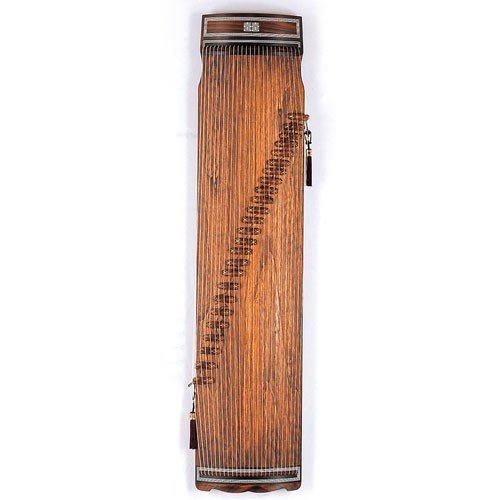The origin and development of Gayageum
633 views · Organized by 沈梦溪 on 2022-02-08
Gayageum, also known as Korean zheng, is a plucked stringed musical instrument of the Korean nation. It is called 가야금 in Korean. Popular in the Korean Peninsula and Yanbian Korean Autonomous Prefecture in Jilin Province, China.

After Gayageum arrived in Silla, it developed and became the great music of Silla, laying a solid position for the court music in the future. Around the 8th century (or earlier), Gayageum was introduced to Japan from the Silla Kingdom, and there are still three Gayageum (i.e. shinra) in the collection of Shoso-in in Nara, Japan. Because Gayageum was introduced to Japan from Silla and was used in Shilla music at the same time, Japan called Gayageum as Silla.
By the end of the 19th century, Gayageum music had reached its peak, which was a turning point in the art of Gayageum. The music gradually changed from the slow court music to the light and lively sang tune. The Gayagum that was originally circulated was transformed into the sang-tuned Gayagum because it was not suitable for playing the fast tone of the sang tune, and it has been passed down to this day.
Since the 1950s, the music of Gayagum in the Yanbye region has undergone a new development, from folk traditions to professional training.
Involving musical instruments
Gayageum (pinyin: Jiā Yē Qín) has been handed down from the Three Kingdoms period of Korea and has a history of more than 2,000 years. It is said that it was made by King Jiaxi of the Gaya country after imitating the zheng. The shape is similar to the guzheng. The qin has twenty-one strings.
Gayageum has a unique artistic style and a variety of playing techniques. You can play solo, ensemble, and ensemble. There are three types of Gayageum, which can be roughly divided into three types: "Jongnak Gayagum", "Sandyo Gayagum", and "21-string Gayagum" used in modern times.
Guess you like
Organized by 九曲 on 2022-02-24
"San Diao" is the form of instrumental solo and also the name of the piece. It's based on rap tones.
read >>
Organized by 小小瞬 on 2022-02-08
The genres of Gayageum are mainly divided by regions and different styles of famous artists. The music is mainly divided by dissimilar music.
read >>
 渝公网安备 50010702504639号
渝公网安备 50010702504639号